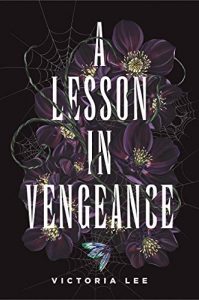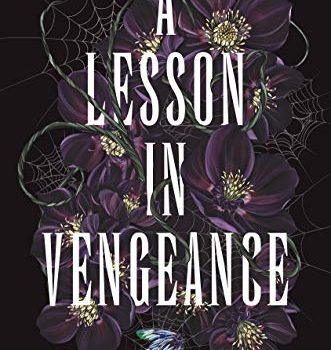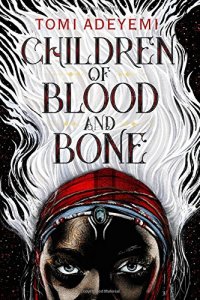Colleen Mondor Reviews A Lesson in Vengeance by Victoria Lee
 A Lesson in Vengeance, Victoria Lee (Delacorte Press 978-0-593-30584-3, $18.99, 384pp, hc) August 2021. Cover by Maggie Enterrios.
A Lesson in Vengeance, Victoria Lee (Delacorte Press 978-0-593-30584-3, $18.99, 384pp, hc) August 2021. Cover by Maggie Enterrios.
From start to startling finish, Victoria Lee’s A Lesson in Vengeance is a dream novel for fans of dark academia. Felicity Morrow has returned to the Dalloway School after receiving intense counseling following the previous year’s tragic death of her classmate/girlfriend, Alex. She will now be back in their former dorm, Godwin House, and trying to navigate life amidst all the attendant drama and whispering that has taken root in the school since the accident to which Felicity was the sole witness. She will have to get along with four new housemates and develop from scratch a senior research project. That assignment will not be easy, as she has been expressly forbidden from considering her former passion, the history of the five 18th-century Dalloway students, rumored to be witches, who were murdered on Godwin’s grounds. Felicity believes in magic and is certain that she and Alex called up one of those witches in a ritual that went horribly awry. Now she wants to forget it all, but one of her new housemates is a teen author hellbent on writing a modern novel using the historic Dalloway killings. Felicity cannot believe her bad luck, nor the sudden attraction she feels for the other girl.
Ellis Haley is confident she can pull off her next book, but she needs Felicity as her research assistant to get it done. With a captivating personality that both entrances and enthralls, Ellis soon draws everyone in Godwin under her spell. As autumn envelopes the Catskill Mountains, the girls embark on mimicking the behavior of their historic counterparts, all while cloaked in tweed, immersed in the books of the gothic library’s occult section, and sipping tea and coffee around their common room fire. As if all that wasn’t enough to draw you in, consider this: A Lesson in Vengeance contains an outstanding depiction of an unreliable narrator, some epic examples of gaslighting, a Machiavellian villain, and WITCHES. I’m not gonna lie, I stayed up all night reading and still cannot believe the twists and turns that Lee dished out.
Lee’s primary focus is steadily on Felicity, who readers will find alternately a sympathetic and infuriating character. She walks a fine line, though, as she knows the history of the Dalloway witches better than just about anybody, and she knows what she and Alex did, and she knows that maybe, possibly, probably, she is being haunted by the most terrifying witch of them all: Margery Lemont. So what’s a girl to do in this situation? Well, she can tell her adviser she plans to study ‘‘misogyny and characterization of female emotionality in horror literature,’’ and she can convince herself that helping Ellis is not a bad idea. She can imagine herself as swept up in the tide of romance and excitement that everyone dreams will find them in high school. Of course, in the middle of all this the reader will discover that Felicity is not who she seems and wonder why Ellis is so dedicated to such a hardcore method-writing approach. (When you get the answer to that question you might want to turn all the lights on in the house and watch the sweetest, sappiest romance movie you can find.)
So, what do we have here? A metric ton of atmosphere, complex characters, tight plotting, and a narrative that spins in So. Many. Unexpected. Directions. Even though it’s mildly terrifying, you will likely long to spend some time at Dalloway and will certainly take note of all the literary references that Lee tosses out like candy. My only complaint – and it is not a minor one – is that the characters, and even those enjoyable literary references, lacked diversity. I’m as happy as the next person to see mention of books by Shirley Jackson, Margaret Atwood, Daphne du Maurier, and Charlotte Perkins Gilman but barely a sentence devoted to Black writers (and the one reference is uttered by the book’s sole African-American character) is a bit glaring. (Not to mention all the other diverse literary options that could have been listed as Felicity’s frequent reads.) It’s an unfortunate oversight on the part of a clearly accomplished author, and a shame for readers who will wonder, as I did, at what’s missing.
Colleen Mondor, Contributing Editor, is a writer, historian, and reviewer who co-owns an aircraft leasing company with her husband. She is the author of “The Map of My Dead Pilots: The Dangerous Game of Flying in Alaska” and reviews regularly for the ALA’s Booklist. Currently at work on a book about the 1932 Mt. McKinley Cosmic Ray Expedition, she and her family reside in the Pacific Northwest and Alaska. More info can be found on her website: www.colleenmondor.com.
This review and more like it in the October 2021 issue of Locus.
 While you are here, please take a moment to support Locus with a one-time or recurring donation. We rely on reader donations to keep the magazine and site going, and would like to keep the site paywall free, but WE NEED YOUR FINANCIAL SUPPORT to continue quality coverage of the science fiction and fantasy field.
While you are here, please take a moment to support Locus with a one-time or recurring donation. We rely on reader donations to keep the magazine and site going, and would like to keep the site paywall free, but WE NEED YOUR FINANCIAL SUPPORT to continue quality coverage of the science fiction and fantasy field.
©Locus Magazine. Copyrighted material may not be republished without permission of LSFF.








